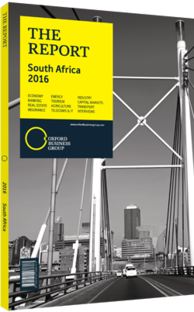Increased focus on tapping renewable sources in South Africa to combat load shedding
In April 2015 the minister of energy, Tina Joemat-Pettersson, announced 13 winning bids for the fourth round of the Renewable Energy Independent Power Producer Procurement (REIPPP) programme. The programme was established in 2011 to combat load-shedding, diversify the energy mix, curb emissions and encourage greater private participation in the sector. Including the fourth round awards, 5423 MW in projects have been approved in the last four years, resulting in $12.5bn worth of private investment. According to Khulu Phasiwe, spokesperson for Eskom, as of September 2015 the company had concluded power purchase agreements with 30 renewable independent power producers (IPPs), accounting for 32 projects totalling up to 1.9 GW of new capacity.
According to the minister, the energy contribution should reach 7000 GWh per annum once all of the initial 47 projects in the REIPPP programme are producing at full capacity by mid-2016. “The REIPPP programme represents the country’s most comprehensive strategy to date in achieving the transition to a greener economy,” Lolette Kritzinger-van Niekerk, head of economics for independent power producer projects at the Department of Energy, told OBG.
Cost-Competitiveness
Renewables have also made significant progress in cost-competitiveness, with Rentia van Tonder, Standard Bank’s Head of Renewable Energy in South Africa, underlining wind tariffs coming down from the first bidding round at R1.14/kWh ($0.10/kWh) in 2011 to R0.80/kWh ($0.77/kWh) in round 4 in 2015, while solar stood at R0.83/kWh ($0.07/kWh) in round 4. Van Tonder added that some of the most recent bids had tariffs of R0.65/kWh ($0.06/kWh), lower than Eskom’s tariffs. “In round 1, government had placed a price cap at R0.87/kWh ($0.08/kWh) to make renewables competitive, but by round 2 they removed it as they saw that the competition and market forces were naturally driving the price down,” van Tonder told OBG.
New Capacity
The Department of Energy plans to add two more bid processes before moving on to the fifth round in the second quarter of 2016, which would re-open consideration to unsuccessful fourth-round bidders, thereby generating 1800 MW in new capacity. By 2022, 17 GW of IPP capacity is set to be added to the South African electricity mix from renewables, cogeneration, coal and gas sources, with 6300 MW of REIPPP recently submitted by the minister to the National Energy Regulator of South Africa (NERSA). From this amount, onshore wind is set to take 3040 MW while solar photovoltaic and concentrated solar power will total 2200 MW, with the remainder made up by a mixture of other sources such as biomass and small hydro.
Feed-Ins
The South African Photovoltaic Industry Association and the South African Property Owners’ Association signed a memorandum of understanding in April 2015 to develop photovoltaic installations on the rooftops of commercial buildings. Embedded solar photovoltaic generation stood between 10 and 30 MW in the first quarter of 2015. “In the long run, the biggest increases in solar will come from smallscale commercial and residential adoptions, not from massive developments,” Shaun Nel, the director of the Energy Intensive Users Group, an industry organisation, told OBG. According to Nel, feed-ins from REIPPP will threaten Eskom’s ability to survive.
The commercial interests of municipalities and Eskom, for whom solar installation feed-ins could mean the loss of business, is an inhibitor, according to Chris Yelland, CEO of EE Publishers, which produces energy sector magazines. “An increased proliferation of rooftop feed-ins would represent a loss in sales for municipalities, and well as well as for Eskom from whom they buy power,” Yelland noted. In January 2015, NERSA said that it was considering allowing customers credit for feeding surplus-generated solar power back into the grid.
You have reached the limit of premium articles you can view for free.
Choose from the options below to purchase print or digital editions of our Reports. You can also purchase a website subscription giving you unlimited access to all of our Reports online for 12 months.
If you have already purchased this Report or have a website subscription, please login to continue.

